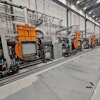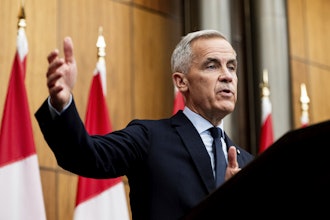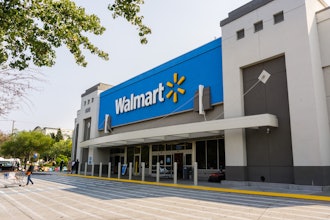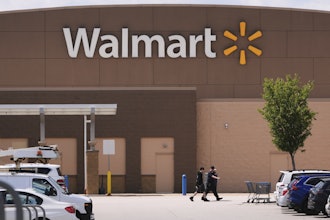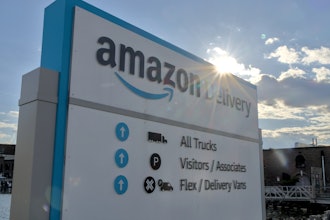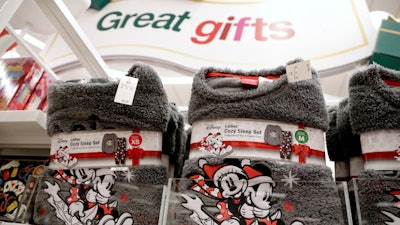
NEW YORK (AP) — Shoppers are spending freely heading into the holidays, but heavy investments and incentives like free shipping by retailers are giving Wall Street pause.
Target Inc., Kohl's Corp., Best Buy Co. and TJX Cos. all reported strong sales at stores opened at least a year. That's a key measure of health for a retailer. Online sales also surged. Target reported a 49 percent increase in online sales, which was better than expected.
But shares of Target and the parent of TJ Maxx took a hit after reporting that their third-quarter profit results were squeezed by higher e-commerce costs. Kohl's delivered strong third-quarter results, but it issued a cautious annual profit forecast. Best Buy, which has been on a winning streak, couldn't win over investors even as it boosted its annual earnings guidance.
"There are clearly a bit of two worlds. Everything we're seeing about the consumer is very positive," Best Buy CEO Hubert Joly told reporters on a conference call Tuesday. "Consumer confidence is at an all-time high...unemployment is incredibly low, wages are going up."
But, he cautioned, "The financial market can be a different picture and we'll see how it evolves."
The National Retail Federation, the nation's largest retail trade group, is expecting holiday retail sales in November and December — excluding automobiles, gasoline and restaurants — to increase as much as 4.8 percent over 2017 for a total of $720.89 billion. The sales growth marks a slowdown from last year's 5.3 percent, which was the largest gain since 2010.
But the figure is still healthy and is the latest indication that the retail industry is far from an apocalypse that some feared only a year ago and a half ago. The growth forecast, which includes online sales, is slower than the average annual increase of 3.9 percent over the past five years.
Adobe Analytics, which analyzes visits to retail websites, predicts a 15 percent increase in online sales to $124.1 billion in online sales for November and December.
Still, retailers are facing a host of challenges. They're grappling with an even stronger Amazon from a year ago, higher labor costs and surging online sales that are putting more pressure on their profit margins. Retailers are also monitoring the impact on tariffs that have been slapped on a variety of different goods imported from China, although holiday merchandise will likely not be affected because they're already in U.S. warehouses. Any price increases could come starting early 2019.
But so far, there seems to be no warning signs that the strong economic times will end anytime soon. "We continue to see a healthy consumer environment as we enter the fourth quarter," Target CEO Brian Cornell said on a call with reporters. He noted there's no indication that the consumer environment is slowing down.
Retailers have been plowing money into their businesses, remodeling stores while trying to speed up online deliveries.
Early last year, Target began a three-year plan to invest $7 billion in its stores and online operations. Kohl's has been sprucing up its merchandise and is now allowing shoppers to return goods purchased through Amazon at 100 stores.
Best Buy has shown resilience in the face of increasing online competition by allowing shoppers to test new technology, and offering speedier delivery options. It's also been expanding its tech support services, including a free service in a couple hundred markets where salespeople visit customers at home to make recommendations on TVs, setup and more.
TJX, which operates T.J. Maxx and HomeGoods, has been bolstering its fashion business, resulting in a hefty 7 percent increase in consolidated same-store sales in the quarter compared to a year ago. But higher freight costs took a bite out of profits.
Despite the snag, "TJX's overall success underlines the fact that even in a strong economy where disposable incomes are rising, consumers still enjoy getting a bargain," wrote Neil Saunders, managing director of GlobalData Retail, a retail research firm.
Meanwhile, Gap Inc., which runs the Gap, Old Navy and Banana Republic chains, reported earnings and revenue that topped Wall Street expectations. But its sales at established stores were flat, weighed by a 7 percent drop at its namesake stores.
"We are clearly not satisfied with the performance of Gap brand," said CEO Art Peck. "We know this iconic brand is important to customers, and we are committed to taking the bold and necessary steps to ensure that it delivers value to shareholders."


